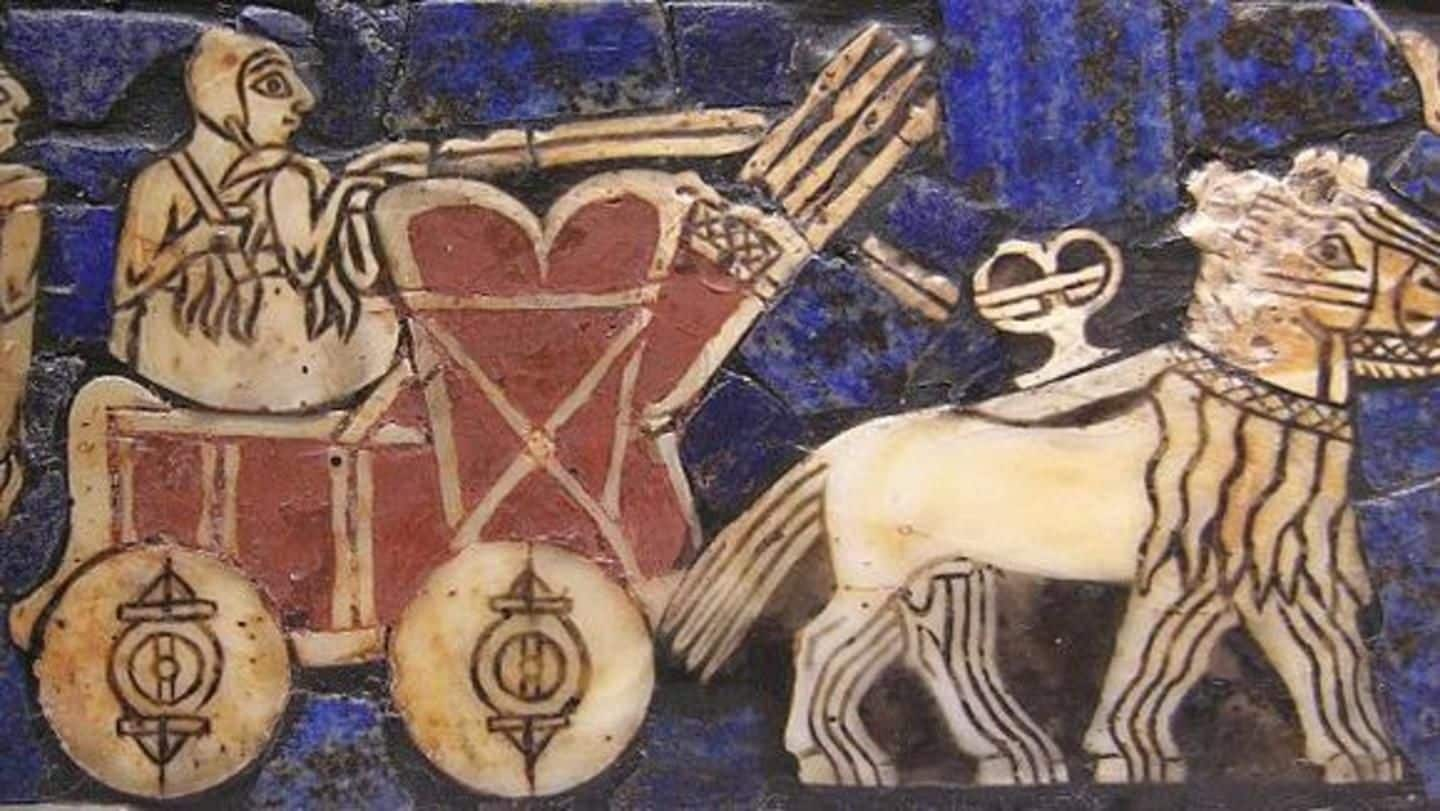
ASI finds first-ever evidence of Bronze Age chariots in India
What's the story
For the first time ever, the Archaeological Survey of India (ASI), among other things, has stumbled upon the remains of three chariots dating back to the Bronze Age (2000BC-1800BC) at the Sinauli village in Uttar Pradesh's Baghpat district. The findings of the ASI, which has been excavating the site for the past three months, opened up further research opportunities into the era. Here's more.
Do you know?
A site near Sinauli had been excavated in 2005
The ASI had, in 2005, excavated Sadiqpur near Sinauli, and had found 125 mass graves with remains of men, women, and children as young as 2-3 years. The graves dated back to 2200BC-1800BC, and indicated that people might have been buried together after some catastrophe.
Findings
Details of the ASI's findings in Sinauli
Over the last few months, the ASI excavated eight burial sites along with several artefacts which include four late-Bronze Age antenna swords, coffins, copper crowns, daggers, greyware pottery, ornaments, helmets, shields and more. Human remains were also found in the archaeologically rich site. The discoveries, said the ASI, could drastically alter perceptions of contemporary Harappan culture. Scholars, however, have expressed doubts over the findings.
Quote
The discovery puts Indian civilization at part with Mesopotamia
"We are now certain that when in 2000 BC, the Mesopotamians were using chariots, swords, and helmets in wars, we also had similar things. This is the very first time such evidence has ever been recovered," said SK Manjul, head of the archaeological team.
Conclusions
ASI: Findings indicate prosperity and presence of warrior class, royals
Based on the findings, the ASI concluded that the people in the region, in that era, belonged to a warrior class and had sophisticated ways of living. Additionally, the discovery of an eight-foot-long coffin with eight anthropomorphic copper motifs, and along with other valuable artefacts points towards a royal burial, the ASI said. Furthermore, valuables found might also be indicative of the civilization's prosperity.
Disputed claims
Not everyone seems to be buying the ASI's 'chariot' claims
When asked whether the findings belonged to the Mahabharata era, ASI archaeologists couldn't provide any conclusive answers. However, not everyone seems to be buying the ASI's claims of discovering 'chariots'. For instance, Ruchika Sharma, a history doctoral scholar at JNU, said that the ASI should clarify its discovery, considering that the alleged chariots could just have been bullock carts common to the late-Harappan era.
Quote
Is the ASI projecting the findings through a Hindutva lens?
"ASI has a tendency to color their discoveries from the lens of Hindutva. They had earlier interpreted female figures as 'mother goddesses', even though there was no evidence to suggest it. It's very unlikely that they [the discoveries] are chariots," added Sharma.